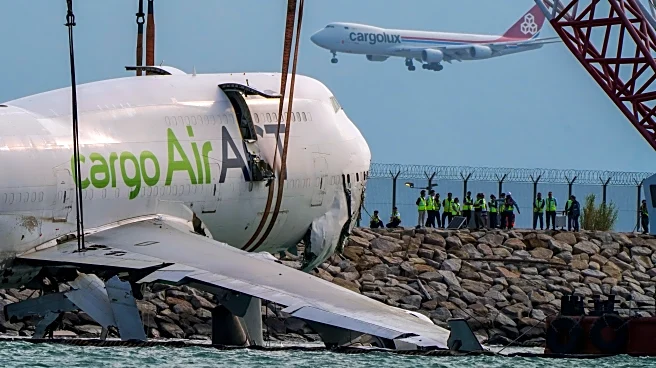What's Happening?
An investigation into a plane crash at Hong Kong International Airport last month has revealed that the aircraft's engine accelerated after landing, leading to the accident. The Boeing 747, operated by
Turkey-based ACT Airlines, skidded off the runway and collided with a security patrol car, resulting in the deaths of two workers inside the vehicle. The four crew members aboard the plane were unharmed. The Transport and Logistics Bureau reported that all flight conditions, including weather and air traffic control, were normal prior to the crash. The Air Accident Investigation Authority's preliminary report identified the Number 4 engine's thrust lever as being in the full forward thrust position, which was unusual compared to the other engines. The investigation will continue to explore potential issues with aircraft systems, engine conditions, maintenance records, and human factors.
Why It's Important?
The findings of the investigation are crucial for understanding the mechanical and operational factors that led to the crash, which has implications for aviation safety standards globally. The involvement of international bodies such as Turkey's Transport Safety Investigation Center and the U.S. National Transportation Safety Board underscores the significance of the incident in the context of international aviation safety. The results could lead to changes in safety protocols and maintenance procedures for aircraft, potentially affecting airlines and passengers worldwide. The investigation's outcome may also influence regulatory measures and the design of future aircraft to prevent similar accidents.
What's Next?
The investigative agency plans to complete a comprehensive report within a year, focusing on the reasons behind the engine's acceleration and other contributing factors. This report will be crucial for implementing any necessary changes in aviation safety practices. Stakeholders, including airlines and regulatory bodies, will be closely monitoring the investigation's progress and findings to adapt their safety measures accordingly. The collaboration with international experts suggests that the final report could have widespread implications for global aviation standards.












